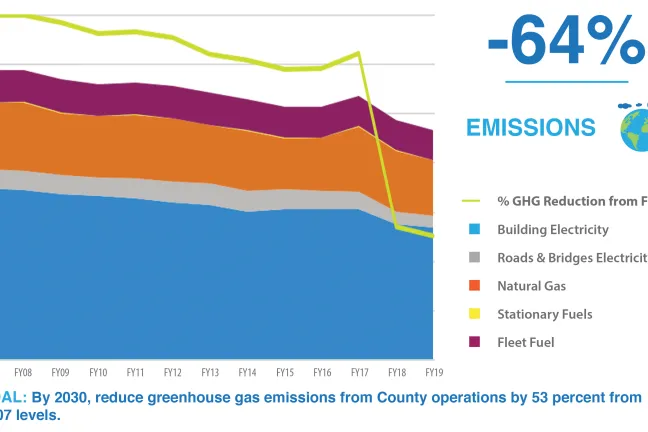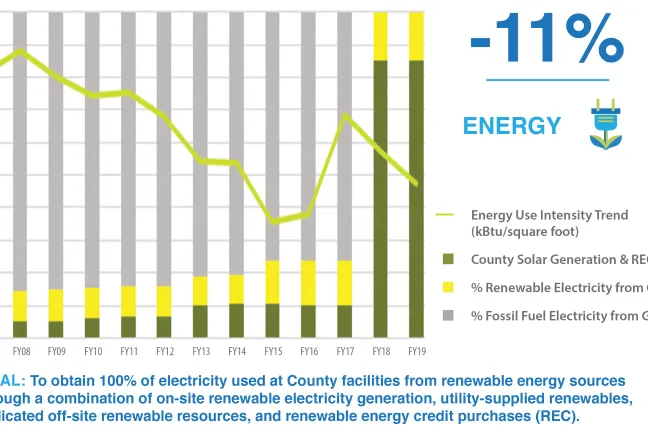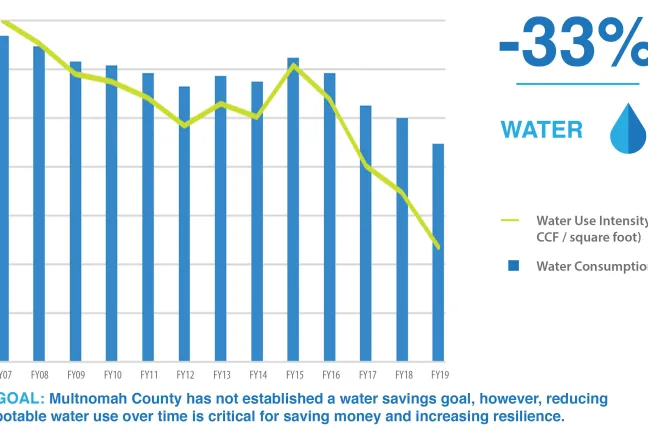Greenhouse gas emissions from Multnomah County operations continue to fall, dropping to 64% below the fiscal year 2007 baseline that was established in the 2015 Climate Action Plan, according to a recently released from the Office of Sustainability.
The Office of Sustainability, in coordination with the Department of County Assets, released the 2019 Resource Conservation Report at a Board of County Commissioners briefing on September 17th. The report tracks the County’s performance on four key indicators, including greenhouse gas emissions, energy use, water use, and waste.
The dramatic reductions in greenhouse gas emissions are attributed to the purchase of green energy and continual efforts to improve energy efficiency. With the opening of the new Health Department Headquarters and Central Courthouse John Wasiutynski, Director of the County Office of Sustainability noted that these efficiency gains should continue. “These new buildings are designed with energy efficiency and resource conservation from the ground up. The new McCoy building is LEED Gold certified and Architecture 2030 certified and uses about a third of the energy per square foot as the old building, and we estimate that new Courthouse will use about a quarter of the energy per square foot compared to the old courthouse,” said Wasiutynski.
Tim Lynch, the Senior Policy Analyst with the Office of Sustainability, also noted that resource conservation leads to financial returns for the County. “In FY 2019 the County avoided about $1.4 million dollars in utility expense... because of conservation we have freed up those resources to be spent by the County’s departments on activities critical to the County's core mission of serving Multnomah County residents,” Lynch said.
Overall energy efficiency, measured by energy use per square foot, has improved 11% since 2007. Water use has also dropped by 30%, an important factor since water utilities are the fastest increasing utility costs in the County.
The one negative spot in the report was a slight decrease in recycling rates. Staff attributed the decline to a number of factors, including turmoil in recycling markets, the switch to a new collection company, and the need for more service at new buildings.
Overall, this third annual Resource Conservation Report was good news for the County and demonstrates the County’s commitment to being accountable for the values and goals set by the Board of County commissioners.
In response to the recent report, Multnomah County Chair Deborah Kafoury said, “I appreciate how we put this issue front and center -- it's not an add on. So much of our conversations across our community as governments feel strapped, cash-wise. They look for where we can cut extras, and they look to our buildings and affordable housing and question the value of energy efficiency and renewable energy. It's important to have these briefings because then we realize it's not an add on, it's not an extra -- it's a core way we do business.”



